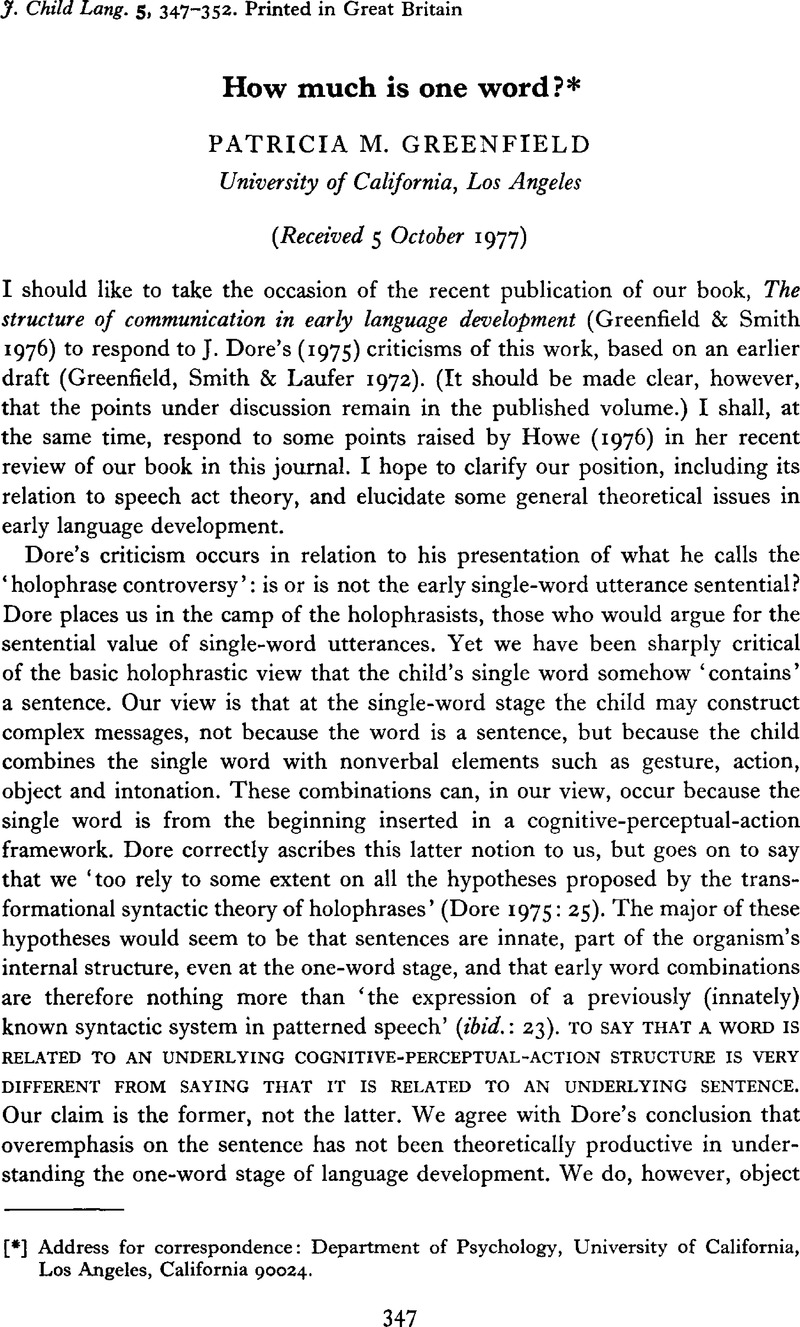Crossref Citations
This article has been cited by the following publications. This list is generated based on data provided by Crossref.
LEONARD, LAURENCE B.
and
FEY, MARC E.
1979.
Vol. 2,
Issue. ,
p.
113.
Gillham, Bill
1990.
First words in normal and Down syndrome children: a comparison of content and word-form categories.
Child Language Teaching and Therapy,
Vol. 6,
Issue. 1,
p.
25.
Christidis, A.-Ph.
1990.
On the categorial status of particles:.
Lingua,
Vol. 82,
Issue. 1,
p.
53.
Pitt, Joe Harrison
1992.
Acquisition of discourse.
English Usage in Southern Africa,
Vol. 23,
Issue. 1,
p.
84.
Coffey, Joseph R.
Zeitlin, Margarita
Crawford, Jean
and
Snedeker, Jesse
2024.
It’s All in the Interaction: Early Acquired Words Are Both Frequent and Highly Imageable.
Open Mind,
Vol. 8,
Issue. ,
p.
309.





